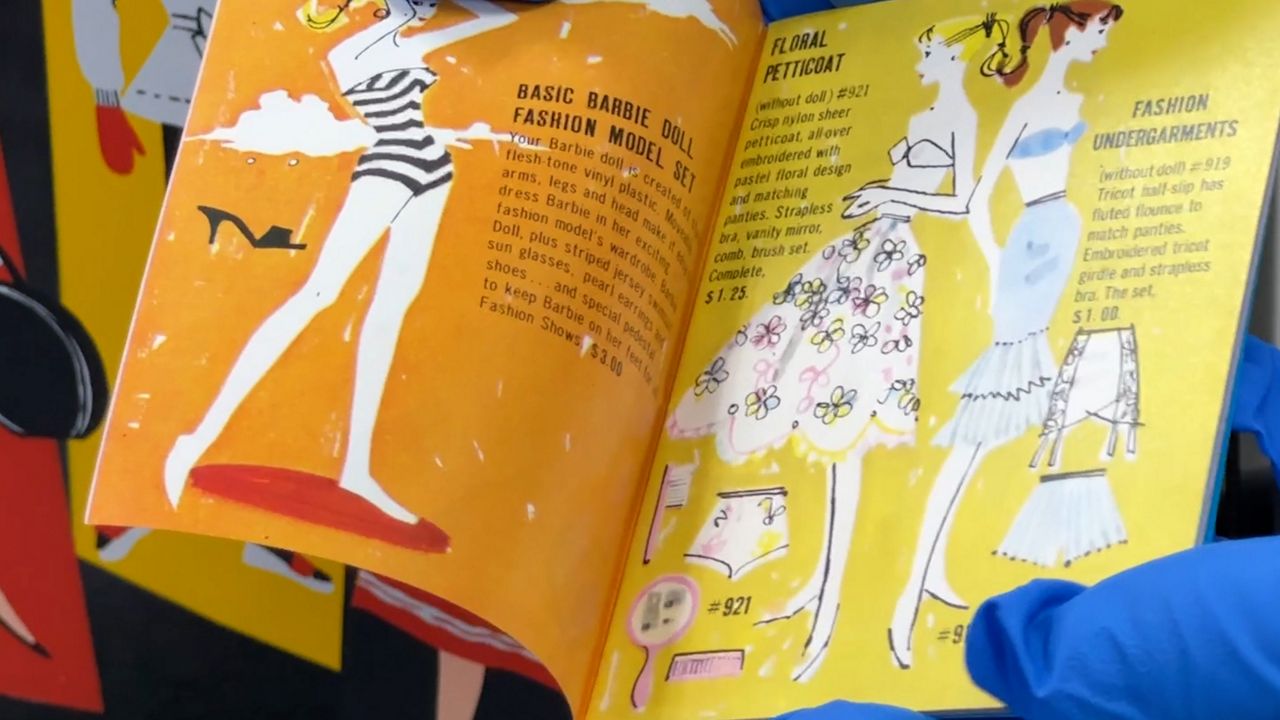MADISON, Wis. — As Barbie fever continues surrounding the new movie, the doll has a connection to Wisconsin.
The Wisconsin Historical Society has a collection of about a dozen antique Barbies. The most prized is likely the 1961 classic Barbie, known for her ponytail and black-and-white swimsuit.
“It was donated to us by a family in Oshkosh, Wisconsin,” said Abigail Norderhaug, state archivist and director of acquisitions for the Wisconsin Historical Society. “Grandparents actually purchased this Barbie so that their granddaughter would have something to play with when she came to visit them.”
The 1961 Barbie in the collection was donated in the ‘70s. It even came with a case that has hangers for the doll’s clothes and outfits. Some of the clothes donated were commercial Barbie products, others were handmade. Norderhaug said that represents something kids don’t really do anymore: sew clothes for their dolls.

Norderhaug’s children now play with her Barbies, while she handles the antiques.
“I had a couple different [Barbies], and my favorite was the day-to-night Barbie, who came with a business suit and then you could turn her business skirt inside out and she would have a tutu,” she said.
After Barbie made her first big splash in 1959, she was given a very specific backstory: she’s a born-and-raised Wisconsinite.
“In the 1960s, Mattel put out a series of books saying that Barbie lived in Willows, Wisconsin and graduated from high school there,” Norderhaug said. In the 2010s, the narrative from Mattel started to change. “In the 2010s, Barbie Dream House Adventures came out and Barbie Great Puppy Keeper came out, and in those, it says she moved from Willows, Wisconsin when she was eight years old.”
Willows is a fictional place. Still, making Barbie from Wisconsin says a lot about what creator Ruth Handler wanted the doll to represent.
“’That ‘70s Show’ was set in Wisconsin, ‘Happy Days’ is set in Wisconsin,” Norderhaug said. “They come back to Wisconsin as a place that says America, or says the Midwest.
The dolls in the Wisconsin Historical Society’s collection of Barbies is meticulously cared for. While it may be rude to speak about a lady’s age, their original Barbie is now in her 50s.
“Things here are identified by number, and then they’re boxed,” Norderhaug said. “[The classic] Barbie is going to move to colder storage, because plastic is extremely hard to preserve.” She said plastic tends to get sticky over time, so they have to take special measures to keep it in good condition.
While preserving toys may sound trivial, Norderhaug said it’s vital to understanding life in any particular era.
“One thing that is hard to document in history is often stories about childhood,” she said. “While children write letters and diaries and things like that, they don’t often make it into the historical record. I think that these are really great examples of things that kids played with and things that kids enjoyed.”
Anybody who had a Barbie as a child, or had a sibling or child who had a Barbie, knows what their hair will look like once a kid gets their hands on it. Most of the Barbies in their collection have been played with, so it’s obvious they were loved by a child.
“Even our classic Barbie, her hair’s in a French braid that was done by the little girl who played with her,” Norderhaug said. “She would’ve come with a ponytail originally.”
While Willows isn’t a real place, the memories people have with Barbie are vivid and special. She told a whole generation of kids that you can be anything you want to be, and wear pink, and be a Badger.
If you have vintage Barbies in the attic, the Wisconsin Historical Society may be interested in them. They seek out dolls that were part of everyday life, and loved by their owners; they’re most interested in the stories behind the Barbie.
To get in touch with them, you can email the author of this story: savanna.tomei@charter.com.



